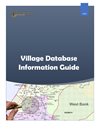Database For Palestinian Villages in 2000 Years
A comprehensive database for depopulated Palestinian villages in 20 centuries:
( The 21st, 20th, 19th, 15th and 4th )
(For a better experience, please open this page in computer)
A Word of Welcome
Palestine has a unique, well documented history and its people, the Palestinians, have lived in their localities for millennia. They never left them except when forced out by Israel in 1948. Here we show through maps, the continuity of Palestinian villages in 2000 years, namely in the 21st, 20th, 19th, 16th and 4th centuries. The village locations are preserved, so are the names with possibly slight phonetic variation.
We show maps, aerial photos, images, reports and other data about each village in the years 2006, 1945, 1877, 1596, 313, whenever such information existed.
This is a unique record of Palestine which was never “a land without people”.
You can navigate through the proscribed procedure in detail. You are guided by:
- A short video describing the procedure.
- An Information Guide describing the offered village data.
- A detailed procedure how to get the required data.
The interested reader can follow the procedure below to find the information about the selected village. When a village is selected, you may fill the Data Request Form, which will enable you to have access to the requested data.
Start here now. Happy Navigation.
***
Introduction & Instructions:
-
This database represents an exclusive collection of maps, aerial photos, images and reports of about 500 depopulated Palestinian villages, over a time span of 2000 years, from the 21st century down to the 4th century.


-
How to browse, find and request your desired village data?
Your journey into the Depopulated Palestinian Villages Database begins with the below this page. This map shows the depopulated villages in 1948 (Red Points), the Palestinian Sub-districts (Yellow Lines), the tribal boundaries (Dashed Yellow Lines) and the Armistice Line of 1949 (Blue Lines), layered on a satellite image background.
The steps to browse, find and request for data of interest are explained in the following:
- In case you already know where your village of interest is located, you should start by zooming in to the exact area using your mouse (scroll or double click) and then click directly on the village point inside the map.
- If you don't know the exact location of your village, go directly to the filter search box located on top of the villages list and write your village name (or part of it). Once you type the nameof the village the results will be filtered and you will be able to see your village on the list.
- After finding your village on the map, click on it to open a popup window to get more details.
- In the opened popup window, you will see the village name, the sub-district, the tribe (for BeerSheba only) and the ID number of the village. Take note of this information to use on your request form.
- In the same popup window, click on the red button to open the data request form page.
- Fill the form with the requested information and use the previously noted village information (Name, Sub-district and ID) in the designated section and Submit.
After you successfully submit, our team will study your request and send you a reply by e-mail in a timely manner to let you know how to proceed to receive the requested information.
Here are some examples of villages data packages you will receive after you successfully submit your request.
Please click on the following links to start you download:
- To download 'Ein Ez Zaytun village (Safad district), please click here.
- To download Ed Dawayima village (Hebron district), please click here.
- To download Abu Shusha village (Ramle district), please click here.
* The
password to proceed for your Data is :
123456